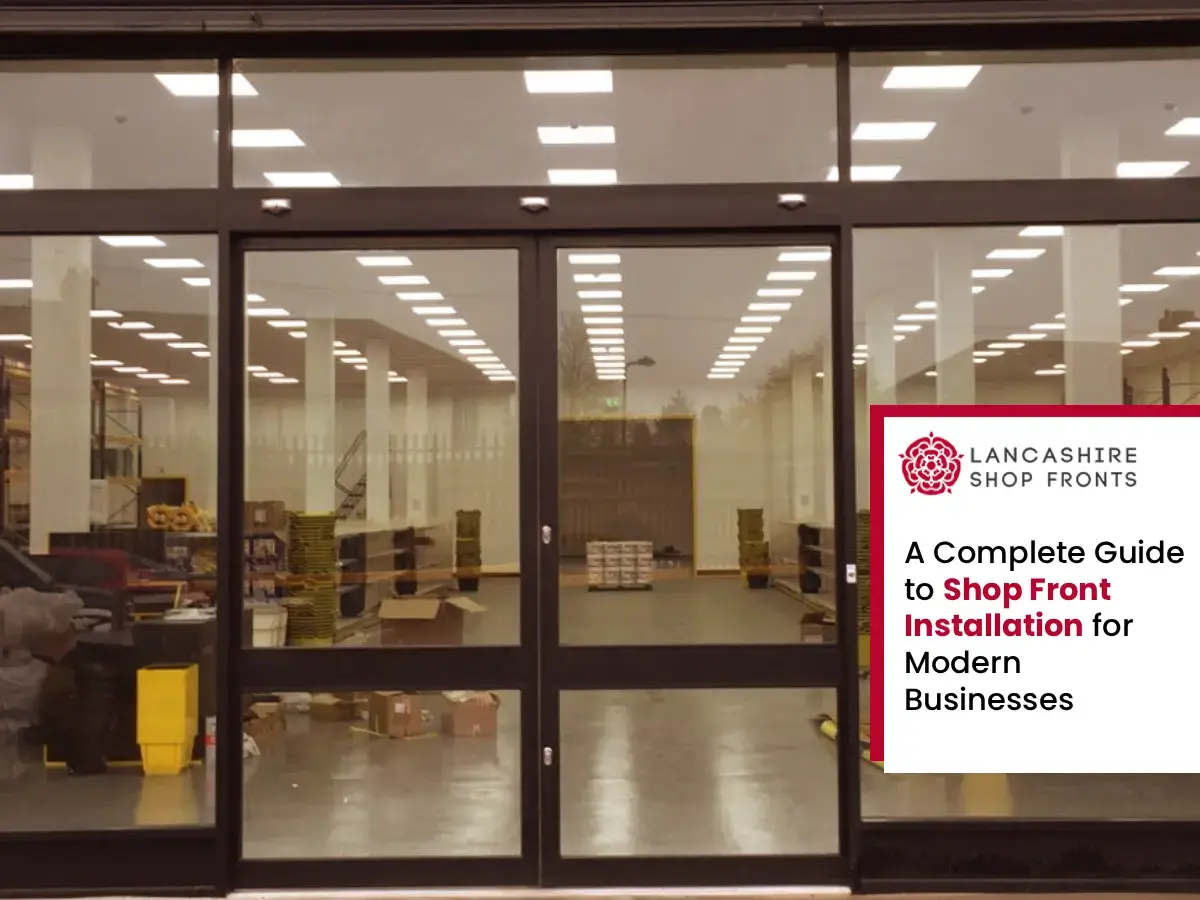Structural accuracy is achieved by first examining the installation site in greater detail. Shop front installers may inspect the building exterior, a process that is done before any tools are involved, measure the available area, and determine the state of the wall and floor surfaces.
An efficient installation of a shopfront requires a solid and stable surface, as the building must remain stable when it is to be used over a long period.
Technical Calculations and Structural Planning
This involves the right frame thickness, the weight-carrying capacity of materials, and compatibility of aluminium framing and toughened or laminated glass. To install a shopfront, the weight of the glass must match the structural strength of the frame, and the pressure should be balanced. The installers also consider wind-load requirements, temperature variations, and expansion allowances. These technical aspects form the structural blueprint that will guide the whole installation process.
Layout Development for the Shop Front Structure
Upon completion of the technical framework, the shop front installers start planning the layout of the shop fronts. They do not have to use estimations; instead, they can utilize exact alignment lines in determining the location of mullions, transoms, and door parts. The grid systems designed in the layout mapping process maintain a symmetrical system, eliminate the possibility of misalignment, and ensure that the shopfront installation is of a uniform pattern at both ends.
Correct layout development is also important to ensure that the movements of the doors, the distance between the entries, are the same throughout the installation.
Reinforcement and Stability Configuration
Reinforcing high-load zones is a requirement to obtain structural accuracy. In shopfront installation, installers use steel plates, strengthening brackets, and reinforcement channels where support is needed. These elements deter structural changes and make them more stable, particularly in big shop fronts that are subjected to constant public traffic or environmental stress. Any material used in this stage must be of commercial grade to guarantee stability over the long run.
Frame Assembly and Alignment Procedures
The frame assembly is crucial for achieving accuracy during the installation stage. The base channel will be installed first, and then the point of reference for the whole shopfront installation will be set. The shop front installers put the verticals and align the frame using check levelling tools to ensure there is no deviation.
All angles, intersections, and connectors must be in alignment with the pre-marked grid, and the shop fronts must be similar in their symmetry. Gaps, uneven portions, and a lack of structural balance are avoided by properly aligning the frames.
Glass Placement and Adjustment
Before installing the panel into the frame channels, the installers measure every glass panel and edge finish. The glass should not be overly tight; it should not put undue pressure on the seal and create stress points that could potentially cause a fracture.
The glass is stabilized with appropriate sealing products, including gaskets and structural silicone, to eliminate vibration. Each glazing panel is adjusted for consistency, which is crucial in terms of both structural integrity and visual precision.
Hardware Integration and Functional Checks
The fitting of door handles, pivots, locks, hinges, and closing mechanisms will be carried out in line with the design plan. This equipment should fit into the frame and operate smoothly without any resistance. Installers inspect all parts of the movement to ensure that the door opens and closes without difficulty. Hardware accuracy guarantees the pattern of the shop fronts is durable and performs as intended after long usage.
Final Evaluation and Structural Verification
Shop front installers also conduct a thorough structural survey at the end of the installation. They also inspect all joints, seals, edges of glasses, and frame lines to ensure that everything is aligned. Finally, door movement, frame rigidity, and external finishing surfaces are checked. Any modification is considered regardless of whether it brings the project into compliance with standard construction requirements.






